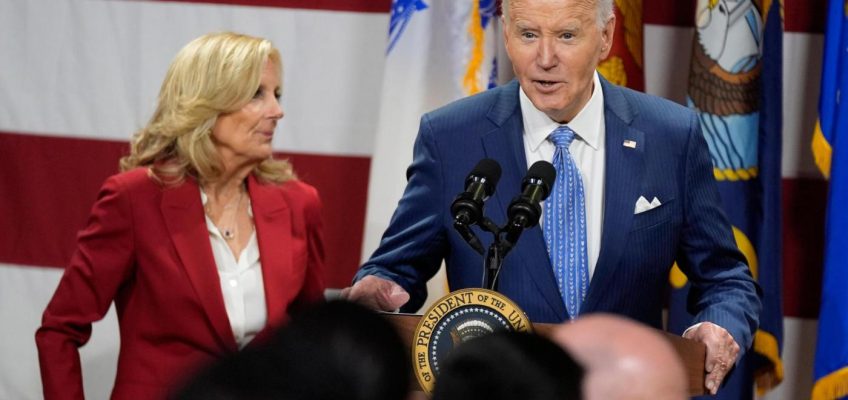These are the times that try a constitutional conservative’s soul.
Donald Trump and his allies have proposed two legal maneuvers that could have profound consequences for the function of the federal government. He has proposed confirming presidential appointments through an abuse of his power to make recess appointments, and his allies have proposed reviving a mostly banned practice called impoundment, under which the president can refuse to spend money appropriated by Congress.
These proposals together would gut core constitutional functions of Congress and could make Trump our nation’s most imperial peacetime president.
You can’t fully comprehend how pernicious these proposals are without knowing Congress’ intended role in our republic. If you read the Constitution carefully, you see that the United States was not intended to have coequal branches of government. Instead, it is clear that the branch of government closest to the people, Congress, was given more power than any other.
While other branches can check Congress’ power — the president can veto bills and the Supreme Court can use the power of judicial review to invalidate statutes passed by Congress, to give the most obvious examples — Congress’ enumerated powers surpass those of both the president and the court.
Article I, Section 7 of the Constitution says, “All Bills for raising Revenue shall originate in the House of Representatives.” This constitutional provision is particularly important, given that in the original Constitution the House was the only part of the federal government chosen directly by the people. The power of the purse is inseparable from democratic rule.
Congress has the sole constitutional power to declare war, even if presidents frequently usurp that authority. It can fire the president, executive officers and judges through impeachment and conviction. It can override presidential vetoes, and the Senate can reject presidential appointees.
But if Trump gets his way, he will have the power to nullify congressional enactments, even if they’re passed with veto-proof majorities. He’ll destroy the Senate’s advice and consent authority. He’ll make the executive the most powerful branch of government by far, creating a version of monarchical government that the founders despised.
In Federalist No. 1, Alexander Hamilton warned that “of those men who have overturned the liberties of republics, the greatest number have begun their career by paying an obsequious court to the people; commencing demagogues, and ending tyrants.” A similar pattern is playing out here — claiming a popular mandate, Trump is now threatening to further diminish American democracy.
In one version of a Trump recess plan, Trump could pressure the Republican majority in the Senate to agree with the House to adjourn, granting Trump the ability to make immediate recess appointments. This is the clear message of Trump’s post on the subject on Truth Social. He wants the Republican leader to agree to an adjournment, thus forfeiting the Senate’s constitutional role.
But if the Senate holds firm, Trump theoretically has another option. He could conspire with the speaker of the House, Mike Johnson, to request that Congress enter into a recess. If the Senate refuses a recess, then he’ll rely on Article II, Section 3 of the Constitution — which provides that the president can adjourn Congress “to such time as he shall think proper” if the two chambers disagree about the timing of a recess — and then use his constitutional power to make recess appointments without the Senate‘s advice or consent.
The recess appointments wouldn’t be permanent. They’d lapse at the beginning of the next congressional term, but he could have his handpicked team for up to two years, and there is nothing the Senate could do about it, at least according to Trump’s theory.
The compelling purpose of ‘advice and consent’
The founders never intended for Article II, Section 3 to permit the president to shut down Congress and name his Cabinet without Senate approval. Recess appointments were created to permit presidents to fill vacancies when Congress was out of session in a large nation, when travel was often slow and difficult.
When legislators were traveling by horseback to Washington, permitting recess appointments made a degree of sense. It could be weeks before Congress could assemble. But now it takes hours, less when they assemble online.
There is no meaningful question about whether Trump’s scheme violates the spirit of the Constitution. Advice and consent exists precisely because the founders believed that a president should not possess unchecked power to name his team.
In Federalist No. 76, Hamilton wrote that the advice and consent power is “an excellent check upon a spirit of favoritism in the president, and would tend greatly to prevent the appointment of unfit characters from state prejudice, from family connection, from personal attachment, or from a view to popularity.”
In fact, a key purpose of the power is to prevent the confirmation of exactly the kind of obsequious yes men with whom Trump surrounds himself. Hamilton warned against the selection of nominees who have “no other merit” than “being in some way or other personally allied to him, or of possessing the necessary insignificance and pliancy to render them the obsequious instruments of his pleasure.”
Justice Scalia’s reasoning
Trump’s potential scheme violates the letter of the Constitution as well. In a 2014 case called National Labor Relations Board v. Noel Canning, the Supreme Court unanimously rejected President Barack Obama’s recess appointment of three members of the National Labor Relations Board. A majority of the court held that even when the Senate was in a mere “pro forma” session — when no formal business was conducted — it was not technically “in recess,” and thus the recess appointment power wasn’t available to the president.
Four members of the court, however, went further. In a persuasive concurrence, Justice Antonin Scalia argued that the recess appointments clause covered only the space between congressional sessions, not breaks within the session. Chief Justice John Roberts, Justice Samuel Alito and Justice Clarence Thomas all joined with Scalia.
According to this reasoning, even if Trump engineered a disagreement between the House and the Senate and forced a recess, his recess appointment power wouldn’t attach because the recess occurred after the congressional term started.
Yes, that’s a concurrence — and concurrences aren’t binding law — but the current court’s jurisprudence is far more aligned with Scalia’s than it is with that of Justice Stephen Breyer, the author of the Canning majority. It is highly unlikely that a Roberts-led court would abandon Scalia’s logic and rubber-stamp an obvious end-run around one of the Senate’s core constitutional powers.
‘Impoundment’
Now let’s talk about impoundment. During earlier periods of American history, presidents would sometimes refuse to spend money appropriated by Congress. This process, which came to be called impoundment, could give presidents the ability to nullify acts of Congress, even if the act passed with a veto-proof majority.
Imagine that Congress passed a statute mandating the construction of a new bridge across the Potomac, at a cost of $200 million. If impoundment were a real option, the president could simply choose not to spend the money, block construction of the bridge and frustrate the will of Congress.
American presidents periodically used impoundment to block the use of appropriated funds until 1974, when Congress largely banned the practice through the Impoundment Control Act. The act was passed after Richard Nixon frustrated Congress by impounding funds more than his predecessors, blocking spending for multiple programs across several federal agencies.
The constitutional justification is obvious. It prevents the president from exercising an unconstitutional version of a veto. Nonetheless, in a Wall Street Journal essay last week, Elon Musk and Vivek Ramaswamy — the two men Trump named to lead his new Department of Government Efficiency — raised the prospect of reviving impoundment. They suggested it was the Impoundment Control Act itself that was unconstitutional.
Russ Vought, Trump’s former director of the Office of Management and Budget (and the man Trump has chosen to choose to lead the OMB again), is an enthusiastic supporter of impoundment. The Center for Renewing America, which Vought founded in 2021, has published a raft of materials attacking the constitutionality of the Impoundment Control Act.
I very much want to limit the growth of government spending, but not at the expense of our constitutional structure. There is no authority for impoundment in the text of the Constitution. The president’s principal check on Congress is the veto, and the process for vetoes (and for overriding them) is plainly detailed in the text.
A consequence of Congress’s abdication
Jamelle Bouie: It’s a republican form of government, not a monarchy. With explicit intent
Nolan Finley: Musk hopes to make budget cutting cool
Other voices: Senate shouldn’t abdicate its authority over presidential nominees
Matthew Yglesias: There’s a better way to fix school problems than abolishing the Education Department
Sean Higgins: To solve burgeoning retail theft problem … more machines? Probably not
One of the reasons American democracy is under duress is that Congress has spent decades abdicating its power to the president. Congressional inaction has created a power vacuum that presidents and courts have been only too eager to fill.
Unilateral executive action elevates the power of the presidency, increases the stakes of each presidential election and sidelines our nation’s most democratic branch of government. According to Trump and his team, however, Congress has not abdicated enough power. They want the president to get the yes men and women he wants in government, no matter how corrupt or unqualified. They want the president to block government spending, no matter if Congress has mandated the expenditure.
Trump isn’t in office yet. We don’t know whether he’ll follow through on his threats and try to engineer a recess or impound funds. But his threats are still destructive. He’s trying to cow Congress into becoming an extension of his own will and desires. And if the Republican-led Congress capitulates, the party that long prided itself on constitutional fidelity will become an instrument of its decline.
David French writes a column for the New York Times.




